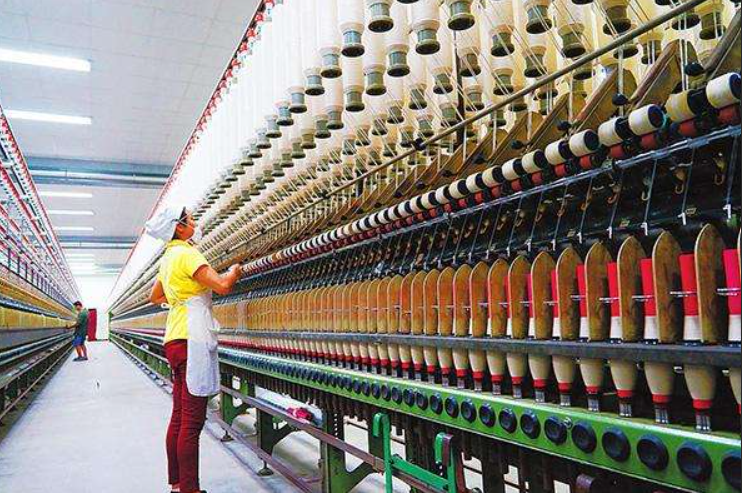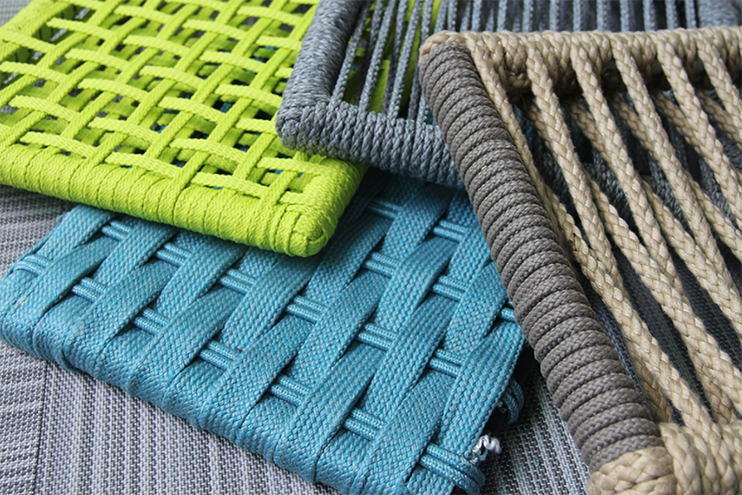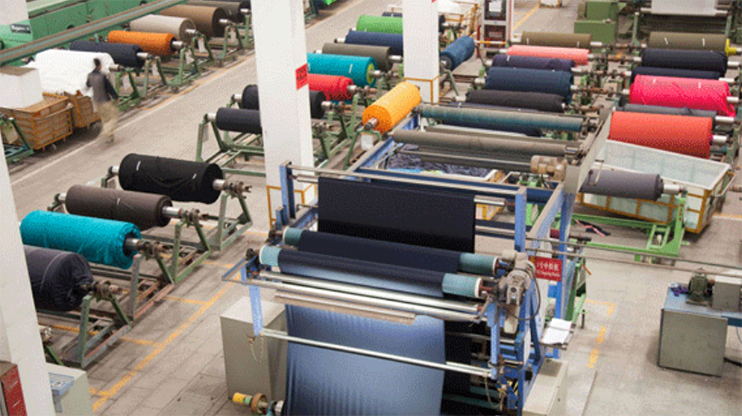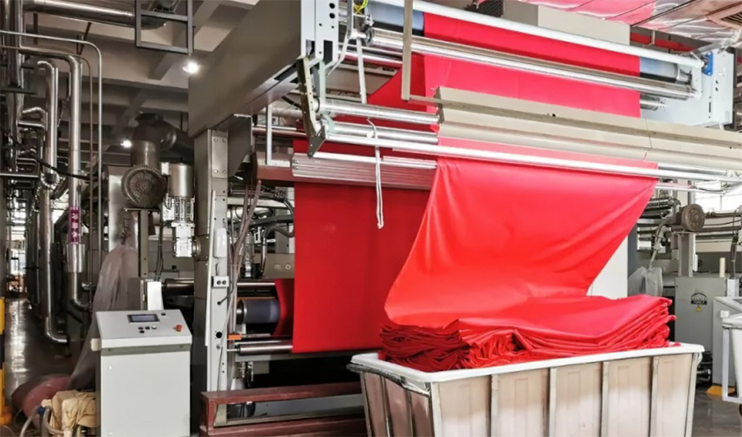The types of dyes on textiles are difficult to identify with the naked eye and must be accurately determined through chemical methods. Our current general approach is to rely on the types of dyes provided by the factory or inspection applicant, plus the experience of the inspectors and their understanding of the production factory. to judge. If we do not identify the dye type in advance, it is very likely that the unqualified products will be judged as qualified products, which will undoubtedly have great disadvantages. There are many chemical methods for identifying dyes, and the general procedures are complicated, time-consuming and labor-intensive. Therefore, this article introduces a simple method for identifying the types of dyes on cellulose fibers in printed and dyed textiles.
principle
Determine the principles of simple identification methods
According to the dyeing principle of dyes on textiles, the generally applicable dye types for common textile fabric ingredients are as follows:
Acrylic fiber-cationic dye
Nylon and protein fibers-acid dyes
Polyester and other chemical fibers-disperse dyes
Cellulosic fibers - direct, vulcanized, reactive, vat, naftol, coatings and phthalocyanine dyes
For blended or interwoven textiles, the dye types are used according to their components. For example, for polyester and cotton blends, the polyester component is made with disperse dyes, while the cotton component is made with the corresponding dye types mentioned above, such as disperse/cotton blends. Activity, dispersion/reduction process, etc. Including fabrics and garments accessories such as ropes and webbing.

Method
1. Sampling and pre-processing
The key steps in identifying the type of dye on cellulose fibers are sampling and sample pretreatment. When taking a sample, parts of the same dye should be taken. If the sample contains several tones, each color should be taken. If fiber identification is required, the fiber type should be confirmed according to FZ/TO1057 standard. If there are impurities, grease, and slurry on the sample that will affect the experiment, it must be treated with detergent in hot water at 60-70°C for 15 minutes, washed, and dried. If the sample is known to be resin-finished, use the following methods.
1) Treat uric acid resin with 1% hydrochloric acid at 70-80°C for 15 minutes, wash and dry.
2) For acrylic resin, the sample can be refluxed at 50-100 times for 2-3 hours, then washed and dried.
3) Silicone resin can be treated with 5g/L soap and 5g/L sodium carbonate 90cI for 15 minutes, washed and dried.
2. Identification method of direct dyes
Boil the sample with 5 to 10 mL of an aqueous solution containing 1 mL of concentrated ammonia water to fully extract the dye.
Take out the extracted sample, put 10-30mg of white cotton cloth and 5-50mg of sodium chloride into the extraction solution, boil for 40-80s, leave to cool and then wash with water. If the white cotton cloth is dyed into almost the same hue as the sample, it can be concluded that the dye used to dye the sample is a direct dye.

3. How to identify sulfur dyes
Place 100-300mg sample into a 35mL test tube, add 2-3mL water, 1-2mL 10% sodium carbonate solution and 200-400mg sodium sulfide, heat and boil for 1-2 minutes, take out 25-50mg white cotton cloth and 10-20mg sample sodium chloride in a test tube. Boil for 1-2 minutes. Take it out and place it on filter paper to allow it to re-oxidize. If the resulting color light is similar to the original color and only differs in shade, it can be considered to be sulfide or sulfide vat dye.
4. How to identify vat dyes
Place 100-300mg sample into a 35mL test tube, add 2-3mL water and 0.5-1mL 10% sodium hydroxide solution, heat and boil, then add 10-20mg insurance powder, boil for 0.5-1min, take out the sample and put it into 25-10% sodium hydroxide solution. 50mg white cotton cloth and 0-20mg sodium chloride, continue to boil for 40-80s, then cool to room temperature. Take out the cotton cloth and place it on the filter paper for oxidation. If the color after oxidation is similar to the original color, it indicates the presence of vat dye.

5. How to identify Naftol dye
Boil the sample in 100 times the amount of 1% hydrochloric acid solution for 3 minutes. After being fully washed with water, boil it with 5-10 mL of 1% ammonia water for 2 minutes. If the dye cannot be extracted or the extraction amount is very small, then treat it with sodium hydroxide and sodium dithionite. After discoloration or discoloration, the original color cannot be restored even if it is oxidized in the air, and the presence of metal cannot be confirmed. At this time, the following 2 tests can be performed. If the dye can be extracted in 1) test, and in 2) In the test, if the white cotton cloth is dyed yellow and emits fluorescent light, it can be concluded that the dye used in the sample is Naftol dye.
1) Put the sample into the test tube, add 5mL of pyridine and boil it to observe whether the dye is extracted.
2) Place the sample into a test tube, add 2 mL of 10% sodium hydroxide solution and 5 mL of ethanol, add 5 mL of water and sodium dithionite after boiling, and boil to reduce. After cooling, filter, put white cotton cloth and 20-30 mg sodium chloride into the filtrate, boil for 1-2 minutes, leave to cool, take out the cotton cloth, and observe whether the cotton cloth fluoresces when irradiated with ultraviolet light.
6. How to identify reactive dyes
The characteristic of reactive dyes is that they have relatively stable chemical bonds with fibers and are difficult to dissolve in water and solvents. At present, there is no particularly clear testing method. A coloring test can be performed first, using a 1:1 aqueous solution of dimethylmethylamine and 100% dimethylformamide to color the sample. The dye that does not color is the reactive dye. For garments accessories such as cotton belts, environmentally friendly reactive dyes are mostly used.

7. How to identify paint
Coatings, also known as pigments, have no affinity for fibers and need to be fixed on the fibers through an adhesive (usually a resin adhesive). Microscopy can be used for inspection. First remove any starch or resin finishing agents that may be present on the sample to prevent them from interfering with the identification of the dye. Add 1 drop of ethyl salicylate to the fiber treated above, cover it with a cover slip and observe it under a microscope. If the fiber surface appears granular, it can be identified as resin-bonded pigment (paint).
8. How to identify phthalocyanine dyes
When concentrated nitric acid is dropped on the sample, the bright green dye is phthalocyanine. In addition, if the sample is burned in a flame and turns obviously green, it can also be proved that it is a phthalocyanine dye.
in conclusion
The above rapid identification method is mainly for rapid identification of dye types on cellulose fibers. Through the above identification steps:
First, it can avoid the blindness caused by merely relying on the type of dye provided by the applicant and ensure the accuracy of the inspection judgment;
Second, through this simple method of targeted verification, many unnecessary identification test procedures can be reduced.
Post time: Nov-29-2023

